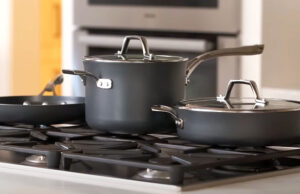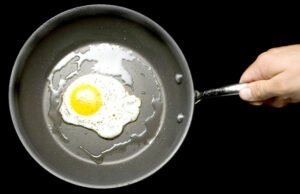As an Amazon Associate, I earn from qualifying purchases at no extra cost to you.
How to Connect Your Dishwasher to a Sink: A Step-by-Step Guide
Installing a dishwasher may sound like a big task, but with the right tools and a little patience, you can get it done yourself! Connecting your dishwasher to a sink is an essential part of the process. In this article, we’ll walk you through all the steps, making sure everything is clear, simple, and easy to follow. By the end of this article, you’ll be ready to enjoy your new dishwasher without needing to call a plumber. Let’s dive in!
Understanding the Basics of Dishwasher Installation
Before we jump into the actual steps of connecting your dishwasher to the sink, it’s important to understand the basics of how the dishwasher works. This will make the whole process much easier for you.
Dishwashers require two main connections: one for water supply and one for drainage. The water supply ensures the dishwasher gets enough water to clean your dishes, while the drainage system helps remove the dirty water from the dishwasher. These connections typically hook up to your sink plumbing system.
Understanding these connections will give you the confidence to handle the job. The water supply will be connected through a hose to your sink’s hot water line, while the drainage will be connected to the drain hose that leads to the sink’s drain.
Now that we have a basic understanding, let’s move on to what tools and materials you’ll need.
Tools and Materials Needed for the Job
To connect a dishwasher to a sink, you need a few tools and materials. Don’t worry; they are simple and easy to find at most hardware stores. Here’s a list of what you’ll need:
- Adjustable wrench
- Screwdrivers (flathead and Phillips)
- Teflon tape (for sealing connections)
- Drain hose (usually provided with the dishwasher)
- Water supply hose (also often included)
- Hose clamps
- Pipe adapter (if needed)
- Plumber’s tape (optional but useful)
- Bucket or towel (to catch any water that might leak)
Make sure you have these items before starting the installation. Having everything ready ensures you won’t need to stop midway to look for a tool or part. Once you’re set, it’s time to gather your courage and get started!
Step-by-Step Guide to Connecting the Dishwasher to Your Sink
Now, let’s break the process down into simple steps. Each step will help you connect your dishwasher to the sink without any problems. Don’t be intimidated by the work—it’s easier than it looks.
Step 1: Turn Off the Water Supply
First things first—turn off the water supply to the sink. You don’t want water spraying everywhere while you work! Look under your sink for the shut-off valves and turn them to the off position. It’s also a good idea to turn off the power to the dishwasher, just in case.
If you have a garbage disposal, it’s a good idea to disconnect it temporarily, as it may interfere with the drain hose.
Step 2: Install the Dishwasher Drain Hose
The next step is to install the dishwasher’s drain hose. This hose will carry the dirty water away from the dishwasher. The drain hose typically attaches to your sink’s drain or garbage disposal.
If your sink has a garbage disposal, you’ll likely find a dishwasher port where the drain hose can be attached. If not, you may need a special adapter to connect the drain hose to the sink’s drain line.
- First, take the drain hose provided with your dishwasher and connect one end to the dishwasher’s drainage port.
- Next, attach the other end to the sink’s drain or garbage disposal, depending on your setup. You may need a hose clamp to secure the hose tightly and prevent leaks.
- If you’re using an adapter, connect it to the sink’s drain pipe first, then attach the hose.
Once everything is secured, tighten any clamps and check the hose for any kinks that might obstruct the water flow.
Step 3: Connect the Water Supply Line
Now it’s time to connect the water supply line. This is the hose that brings hot water into the dishwasher. You’ll be connecting it to your sink’s hot water valve.
- Start by attaching the water supply hose to the dishwasher’s water inlet port. Again, you may need a hose clamp to make sure the connection is secure.
- Next, take the other end of the hose and connect it to the sink’s hot water valve. If the valve is hard to reach, you may need to remove the faucet or a part of the sink plumbing.
- Once it’s connected, use your adjustable wrench to tighten the connection.
Be careful not to overtighten, as this can cause the hoses to crack or become damaged.
Step 4: Secure the Dishwasher and Test the Connections
With the drain hose and water supply hose connected, it’s time to secure the dishwasher itself. Slide the dishwasher into its designated spot under the counter. Make sure it’s positioned properly and the hoses are not pinched or bent.
Now it’s time to test the connections. Turn the water supply back on and check the dishwasher’s connections for leaks. Run a short cycle and keep an eye out for any drips or signs of water escaping from the hoses. If you notice any issues, tighten the connections a little more.
Step 5: Turn Everything Back On
Once you’ve confirmed that there are no leaks, turn the power back on to the dishwasher. You’re ready to test it and make sure everything works correctly. Start a regular cycle and check for proper water flow, drainage, and cleaning performance.
If you encounter any issues, double-check the connections and ensure everything is secure. If everything runs smoothly, you’ve successfully connected your dishwasher to the sink!
Troubleshooting Common Issues
Even after following all the steps above, you might run into some common issues during installation. Don’t worry! Here are some easy solutions to help you out.
Issue 1: Leaky Drain Hose Connection
If you notice water leaking from the drain hose connection, it’s likely that the hose isn’t connected tightly enough. Go back and tighten the hose clamp. If that doesn’t fix the problem, check for any cracks or holes in the hose itself. Replace it if necessary.
Issue 2: Low Water Pressure
If the dishwasher isn’t filling with enough water, check the water supply hose. It may not be fully open, or there may be a kink that restricts water flow. Straighten the hose and ensure the water valve is fully open.
Issue 3: No Power to the Dishwasher
If the dishwasher doesn’t turn on, make sure the power is connected properly. Check the power cord and the outlet. If the dishwasher is hardwired into the electrical system, you may need to check the circuit breaker.
Issue 4: Drainage Problems
If the dishwasher isn’t draining properly, check the drain hose for kinks or blockages. You might also want to check the garbage disposal or sink’s drain line for any obstructions that could prevent the water from flowing properly.
I hope this article helped you understand how to connect your dishwasher to the sink with ease! While it may seem like a complicated task at first, breaking it down into simple steps makes it manageable for anyone. Just remember to take your time, check for leaks, and test everything before calling it a day. Soon enough, you’ll have a fully functioning dishwasher ready to clean all your dishes!
Frequently Asked Questions
Can I connect my dishwasher to a cold water line?
No, dishwashers should be connected to the hot water line to clean your dishes properly. Cold water will not clean as effectively.
Is it necessary to install a garbage disposal when connecting a dishwasher?
No, you don’t need a garbage disposal to connect a dishwasher, but it does make the installation process easier. You can use an adapter if your sink doesn’t have one.
Do I need a plumber to connect my dishwasher to the sink?
You don’t need a plumber if you follow the steps in this guide. However, if you feel uncomfortable working with plumbing, it’s always a good idea to hire a professional.
Can I use the same drain line for the dishwasher and sink?
Yes, you can share the same drain line. Most dishwashers connect to the sink’s drain or garbage disposal using a Y-connector.
Is it safe to connect the dishwasher’s drain hose to the sink’s drain line?
Yes, it is safe as long as the hose is properly secured and there are no leaks. Make sure the connections are tight and the hose is free of obstructions.
Do I need to install a vent when connecting the dishwasher?
Most dishwashers are designed with a built-in vent. However, if you experience drainage issues, you may need to install an air gap or check the existing vent system.
Can I install the dishwasher if I don’t have a dishwasher port on the sink’s drain?
Yes, you can still install a dishwasher by using an adapter. These can be purchased at most hardware stores.
Is it possible to connect a portable dishwasher to a sink without plumbing modifications?
Yes, a portable dishwasher can connect to a sink faucet without needing permanent plumbing modifications. It uses a quick-connect hose to hook up to the faucet.




